» Edit Band Information
» Edit Albums
» Add a Review
» Add an Album
» Add News | Franz Liszt
Possibly the most technically competent individual to have ever graced the pianoforte, Franz Liszt’s music is widely recognised for itsformative style and defining characteristic. His life spanned the Romantic Era from its early beginnings through its pinnacle and onto thelater realms of experimentation that were beginning to be felt as the 1800s drew to their close. Leaving behind a plethora of music, hecomposed close to 1000 catalogued works ranging from full symphonies, petite piano experiments, etudes, various concertos and opera. Healso was a master of transcription of works close to ...read more
Possibly the most technically competent individual to have ever graced the pianoforte, Franz Liszt’s music is widely recognised for itsformative style and defining characteristic. His life spanned the Romantic Era from its early beginnings through its pinnacle and onto thelater realms of experimentation that were beginning to be felt as the 1800s drew to their close. Leaving behind a plethora of music, hecomposed close to 1000 catalogued works ranging from full symphonies, petite piano experiments, etudes, various concertos and opera. Healso was a master of transcription of works close to him, having translated many masterpieces from composers such as NiccoloPaganini, Ludwig van Beethoven (see his piano transcriptions of Beethoven’s nine symphonies), Johann Sebastian Bach andbeyond.Liszt was at the forefront of being the determinant of musical direction during his height. His style was so unique, that parts of it eventuallybecame the norm, and even led to several of his own music inventions including the symphonic poem and the advocacy of programme music. Such musical definitiveness began its life simply in the Hungarian village Raiding in 1811 with Adam, his father giving the youngster hismusical foundations through piano tuition. With Liszt so intent on being capable, his musical education was eventually taken up and fullyfinanced by a group of Hungarian magnates.After the death of his father, Liszt was still in adolescence and readily capable of earning his own ways. While he could have easily madethat by way of public performance composition and alike, he chose to respect it by teaching others. In Paris and with an unusually highamount of dedication to his tutoring, he was persuaded to partake in bad habits such as drinking. For a time, he is said to have sufferedfrom a slump in his religious devotion. He came into contact with various individuals who assisted him in leaving this depression behind -Chrétien Urhan was one of these. A well established violinist, Urhan introduced Liszt to the Saint-Simonists, and the music of FranzSchubert lasting in a lifelong devotion to that composer’s music.On April 20, 1832, Liszt attended a charity concert hosted by Paganini. He was inspired by Paganini’s unequivocal style, technical virtuosityand showmanship that he became determined to be as great on the piano. It would seem that this determination, still resonant with thatfrom his early childhood, gave Liszt the momentum to achieve this goal. Despite his own willingness to become better than the rest, thegeneral standard of playing being expressed by others was increasing on a monthly basis. Liszt tackled all of these standards, as well asshowing that he could overcome some of the well known ‘impossibilities’ of what couldn’t be achieved. His hand span could reach over 10semitones with ease, allowing him to produce large single stroked chords and other physical oddities.From 1840 he became one of Europe’s most recognised touring musicians. He was relentless in this area, having easily accomplished over1000 public performances over an eight year period, further generating a good amount of word-of-mouth traffic. During his travels he metPrincess Carolyne zu Sayn-Wittgenstein in Kiev who convinced him to take up composition and allow it to become a more formative forcebehind his career. His relationship with her would last for at least 40 years though it was tainted by interjections from her then husband, andthe Russian royalty.Throughout this period in which Liszt was to compose his most renowned works, he forged a formidable technical aura. It was through thisthat many of his compositional counterparts became benefactors of his musical style. Edvard Grieg, Hector Berlioz andRichard Wagner were among the many composers who cherished Liszt abilities, with many of them dedicating their own music towardshis developments. The 1860s saw many personal calamities overshadow him, namely the death of both his children. He never seems tohave overcome these emotional difficulties and re-entered a darker abyss during the later part of his life after many medical altercations. During this time, his music reflected the emotional and physical decay he was experiencing, though this didn’t diminish the quality of hiswork. He died in Bayreuth on July 31, 1886. The exact cause of his death is noted to have been from a battle from pneumonia though thereare those who dispute whether his death was the culmination of medical malpractice.Liszt’s most recognisable works such as “Libestraum”, a piano journey into modern terrains, are evocative of what his music strived toaccomplish. His admiration for the piano clearly dominates music of his musical output from his well known piano concerti (nos. 1, 2 and 3)to etude like arrangements indicative of Frederic Chopin’s own journeys into technical study. His highly Romantic “Dante Symphony” isone place where his orchestral expertise can be discovered. Today he is still widely performed, and his music is readily available on manylabels, having still being remembered as being one of, if not the best pianist of all time.Jake C. Taylor « hide |
Similar Bands: Frederic Chopin, Claude Debussy, Richard Wagner |
|
| LPs |  | Bagatelle sans tonalite, S. 216a
1885
|
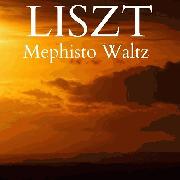 | Mephisto Waltz No. 4, S. 696
1885
|
 | Hungarian Rhapsodies, S. 244
1885
|
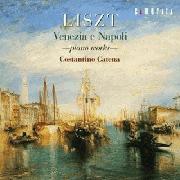 | R. W. Venezia, S. 201
1883
|
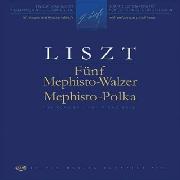 | Mephisto Polka, S. 217
1883
|
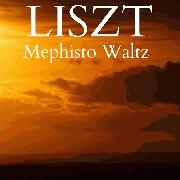 | Mephisto Waltz No. 3, S. 216
1883
|
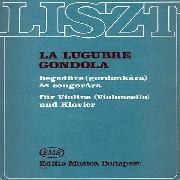 | La lugubre gondola
1882
|
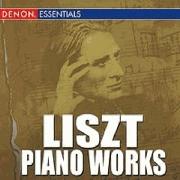 | Nuages Gris (S. 199)
1881
|
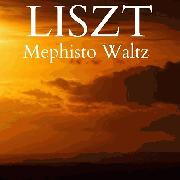 | Mephisto Waltz No. 2, S. 515
1881
|
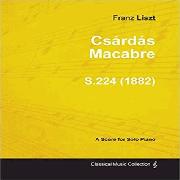 | Csárdás macabre, S.224
1881
|
 | Rhapsodie Espagnole, S.254
1858
|
 | Symphonic Poems
1858
|
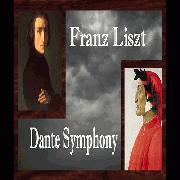 | A Symphony to Dante's Divine Comedy, S. 109
1857
|
 | A Faust Symphony
1857
|
 | Concerto for Piano and Orchestra No. 2 in A major
1857
|
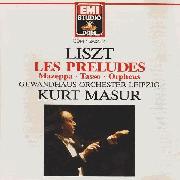 | Les préludes, S. 97
1856
|
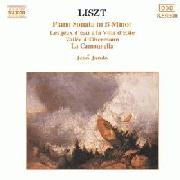 | Piano Sonata in B minor, S. 178
1854
|
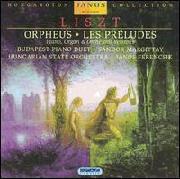 | Orpheus
1854
|
 | Totentanz, S.126
1853
|
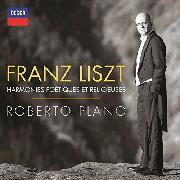 | Harmonies Poetiques Et Religieuses
1853
|
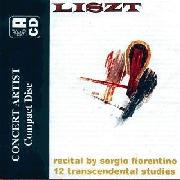 | Études d'exécution transcendante, S.139
1852
|
 | Beethoven: Symphony No. 9, for two pianos, S. 657
1851
|
 | Grandes études de Paganini, S.141.
1851
|
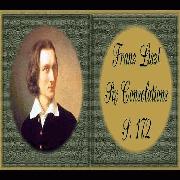 | Consolations S. 172
1850
|
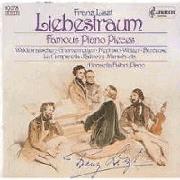 | Liebestraume, S.541
1850
|
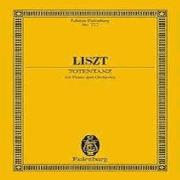 | Totentanz, S. 525
1849
|
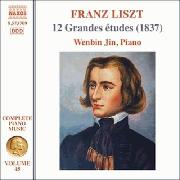 | 3 Etudes de Concert, S. 144
1849
|
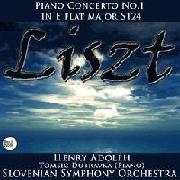 | Piano Concerto No. 1 in E-flat Major, S. 124
1849
|
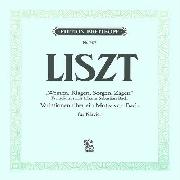 | Variations on Weinen, Klagen, Sorgen, Zagen S. 180
1847
|
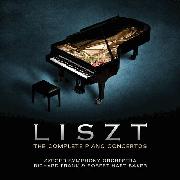 | Piano Concerto No. 3 in E♭ major
1847
|
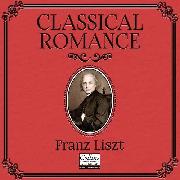 | Romance, S.169/R66a
1843
|
 | Années de pèlerinage, S.160, S.161, S.163
1842
|
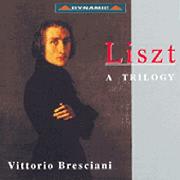 | Réminiscences de Don Juan (S. 418)
1841
|
 | Venezia e Napoli, S.159
1840
|
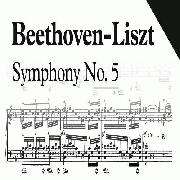 | Symphonie No. 5 de Beethoven A37b/1
1837
|
| EPs | 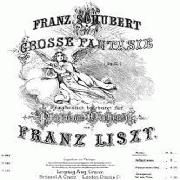 | Grosse Fantasie von Franz Schubert S.366
1868
|
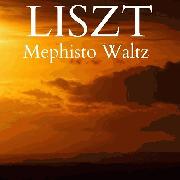 | Mephisto Waltz No. 1, piano solo, S.514
1859
|
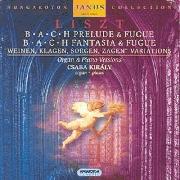 | Fantasy and Fugue on the Theme B-A-C-H S.260i/ii
1856
|
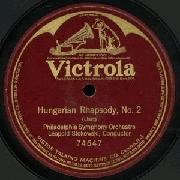 | Hungarian Rhapsody, No. 2
1847
|
|
| Compilations | 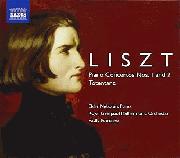 | Piano Concertos Nos. 1 & 2 und Totentanz
01/01/2012
|
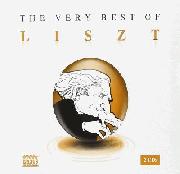 | Very Best of Liszt
2005
|
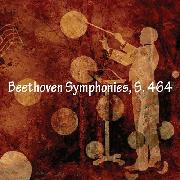 | Beethoven Symphonies, S.464
1865
|
Contributors: sevEn, Zig, taylormemer, Sowing, TheLongShot, Jom, Zig, Doctuses, SandwichBubble,
|
